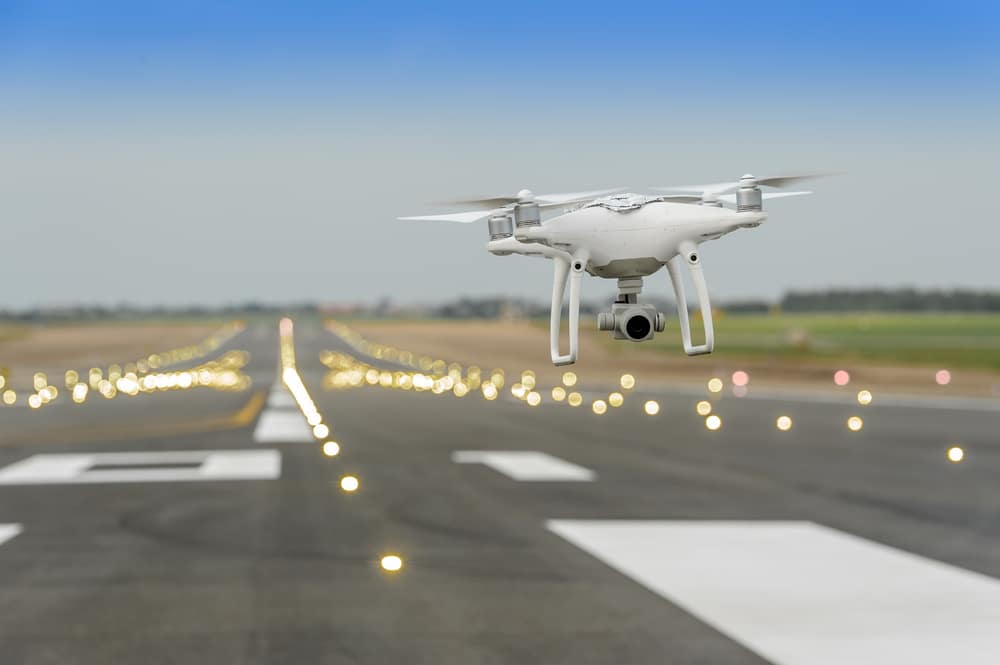Exclusive: How can organizations counter the looming threat of drones?


Victoria Rees
Share this content
Drones are becoming ubiquitous. The global market value reflects this, with it set to increase by 4% each year, resulting in a staggering 5.4 billion USD valuation by the end of 2027. Whilst used innocently by many, the potential to use them for nefarious purposes is now widely recognized. An understanding that was likely made all-pervasive by the infamous shutting down of London Gatwick Airport in 2018 due to fears of a drone in the airspace. Nearly four years later, the ways in which drones can be used to cause physical threats and create organizational disruption have only grown.
Greater use by bad actors
Drones are now the mode of choice for criminals seeking to traffic drugs both across borders and into prisons – being dubbed ‘narcodrones’. And the ease and secrecy provided by the technology has made it impossible for authorities to quantify the volumes being transported. More disturbingly, drones are also being used within warfare. Last month, an oil storage facility in Saudi Arabia was hit in a barrage of drone attacks on the kingdom by Yemen’s Houthi rebels and more recently we have seen them used with devastating effect in the Ukraine conflict.
The escalating threat posed by drones, however, remains a novel one which security teams across sectors have either not previously encountered or do not have the capabilities and protocols in place to adequately address. This is emphasized by a lack of preparedness across critical natural infrastructure facilities with many having little to no investment in the protection of their airspaces.
The US has already seen its first incident, with a modified consumer drone being used in an attack on an electrical substation in Pennsylvania last year. The drone was modified with a trailing tether supporting a length of copper wire. If the wire had come into contact with high-voltage equipment it could have caused a short circuit, equipment failures and possibly fires.
As the use of drones for nefarious activity increases, there needs to be a shift in mentality. Organizations must now begin considering the equipment required and the training and procedures needed to increase their resilience against drone interference.
Addressing the problem
It is easy to assume that the solution to the problem is simply purchasing equipment capable of taking a drone out of the sky. And there are a number of options that can provide that capability. Whether that is using counter-drone technologies such as net-firing anti-drone guns, high energy lasers or even trained eagles. However, whilst these can all neutralize a drone, they are limited in their usefulness if you don’t know where the drone is. For that you need complete situational awareness, a concept organizations can learn from the defense sector and in particular from the OODA loop.
Developed by military strategists, OODA stands for observe, orient, decide and act. In order to be resilient to the threat of drones (or other airborne threats), it is important to have considered the phases of the OODA loop individually and have developed robust procedures and processes for security staff to follow in order to properly protect operations.
Observe: The first step is addressing the need to gain complete situational awareness. Knowing that they can accurately identify a drone, the location of it and ascertain whether it is a threat or not. In the absence of an airspace surveillance system it is almost impossible to achieve the necessary situational awareness, leading to confusion and potentially incorrect decisions being made. Capabilities must therefore be adopted which detect and track small, silent and slow-moving threats like drones.
The most suitable primary detect and track technology for such targets is radar, which is target agnostic and can be engineered to provide reliable detection and 3-D tracking of such non-cooperative targets. However, not all radars are made equal and many are not up to the task. To be effective at countering the threat of drones, they must be able to:
- Reliably detect objects, whether moving fast, slow, or stationary, in a wide range of environmental conditions and cluttered environments; unambiguously classify a detected target as a drone.
- Specify the tracked target’s position in 3D space (bearing, range and elevation), particularly to direct other sensors or effectors onto that target.
- Discriminate between multiple simultaneous tracked targets, of different types (e.g. drones, birds, other aircraft, people, vehicles, animals, etc.).
- Operate without a dedicated human operator.
- Work alongside secondary sensors, such as RF sensing and cameras, which collectively create the ‘Situational Awareness Picture’.
Only with these characteristics will security teams be able to complete the remaining stages of the OODA loop.
Orient: With the 3-D situational awareness offered by the radar, security operators can assess the threat through the track information (is the target on a trajectory to the site, is it in the path of aircraft etc.), the video feed and supplemental RF sensors which may be able to determine drone type. This requires being able to accurately track the drone as it travels and have real time information of its position in the surrounding airspace so that any reaction is correctly targeted
Decide: Having obtained a complete understanding of the drone’s characteristics and location, security teams must then be able to rely on established procedures on which teams have been trained to make an appropriate decision.
Act: Finally, with complete and up to date situational awareness, accurate threat assessment and thereby informed decision making, security teams can then take proportionate and appropriate actions, which balance the threat to operations with the need to maintain them. Note that this may not include disabling the drone, despite this being a popular view of what Counter-Drone systems do. The action may be to remove prisoners from an exercise yard, to shut the blinds on windows of rooms where classified work is being performed, or simply to continue to observe the target for changes in behavior.
Long term resilience
The ubiquity of drones requires a change in how security teams prepare their defences. Walls around a facility are not enough – airborne threats must be given the same consideration as those on the ground.
The key first step to developing a resilient airspace security system is being capable of acquiring accurate and timely situational awareness, without which a proper risk assessment cannot be performed. Once security teams have an understanding of the issue at hand and how their facility is at risk, they can then build in long term solutions, processes and procedures to deliver effective protection.
A failure to do so will leave organizations exposed to confusion, inability to properly assess threats and risk to operations and more likely to react disproportionately; either underestimating the threat – leading to damage or loss of life, or overestimating the threat – leading to loss of income and/or reputational damage.
The above approach provides a suggested framework within which the problem space can be assessed and holistic solutions provided. Note, however, that it deals with the actions performed at the time of a threat. A truly resilient approach to CNI airspace protection will apply pre-event threat assessment, post-event lessons learned and will continue to evolve processes, procedures and equipment in the context of the rate of change of the threat. Without this, it risks being outdated as drones evolve at a fast pace. The threat from drones will not abate, so building in long term resilience must begin now.

By Phil Cork, Head of Programs at QinetiQ.


